
Marx at the Arcade: Consoles, Controllers, and Class Struggle
by
Jamie Woodcock
Published 17 Jun 2019
Williams, “Crunched: Has the Games Industry Really Stopped Exploiting Its Workforce?,” Guardian, February 18, 2015, www.theguardian.com/technology/2015/feb/18/crunched-games-industry-exploiting-workforce-ea-spouse-software. 31Jennifer Pan, “Pink Collar,” Jacobin 14 (2014), www.jacobinmag.com/2014/06/pink-collar/. 32Pan, “Pink Collar.” 33Pan, “Pink Collar.” 34Pan, “Pink Collar.” 35Aphra Kerr and John D. Kelleher, “The Recruitment of Passion and Community in the Service of Capital: Community Managers in the Digital Games Industry,” Critical Studies in Media Communication 32, no. 3 (2015): 190. 36Kerr and Kelleher, “The Recruitment of Passion and Community,” 190. 37Kerr and Kelleher, “The Recruitment of Passion and Community,” 190. 38Kerr and Kelleher, “The Recruitment of Passion and Community,” 191. 39Dyer-Witheford and de Peuter, Games of Empire, 5. 40Dyer-Witheford and de Peuter, Games of Empire, 77. 41Pun Ngai, Labour in China: Post-Socialist Transformations (Cambridge, MA: Polity, 2016). 42Bernard Girard, The Google Way: How One Company Is Revolutionizing Management as We Know It (San Francisco: No Starch Press, 2009). 43Johanna Weststar, Victoria O’Meara, and Marie-Josée Legault, “Developer Satisfaction Survey 2017 Summary Report,” International Game Developers Association, 2018, 22. 44Weststar, O’Meara, and Legault, “Developer Satisfaction Survey 2017 Summary Report,” 19. 45Weststar, O’Meara, and Legault, “Developer Satisfaction Survey 2017 Summary Report,” 32. 46Dyer-Witheford and de Peuter, Games of Empire, 27. 47Dyer-Witheford and de Peuter, Games of Empire, xxix. 48Manuel Castells, The Rise of the Network Society (Oxford: Blackwell, 2000), 17. 49Frederick W.
…
This was perceived as a requirement and if you had issues with it, you were told “Well, you can go stack shelves at Tesco instead or answer phones at a call centre.” You were treated as disposable.30 Many of these forms of work “below the line” are gendered in various ways. For example, in the increasingly important area of publicity and marketing, in which publishers compete in ever more crowded marketplaces for videogames, the sector is “solidly pink-collar,” with public relations workers over 85 percent female. However, in contrast to how journalists are respected for their creative work, publicists have often become targeted as “spin doctors” that are “an insidious and growing threat to journalism and democracy.”31 The nature of the work involves organizing press releases, managing social media, planning events, and so on, all of which relies on relationship building.
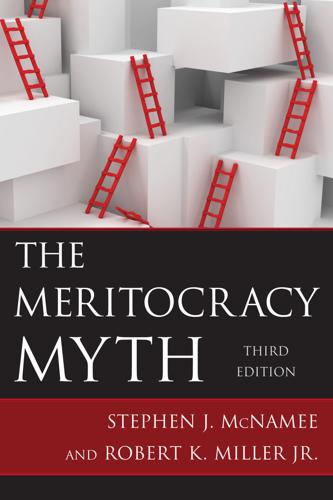
The Meritocracy Myth
by
Stephen J. McNamee
Published 17 Jul 2013
Even if one is an especially skilled and competent nurse, the head nurse on the floor may also be competent, forty years old, and going nowhere. Many pink-collar jobs are disproportionately located in the low-wage service sector of the economy. The jobs themselves are insecure, and those who hold them face higher-than-average risks of irregular employment, involuntary part-time work, and layoffs or firing. These jobs typically carry limited fringe benefits, and some require shift work. Pink-collar jobs and the industries in which they are located are typically not unionized; therefore, workers do not benefit from protections won by the collective power of unions.
…
Pink-collar jobs and the industries in which they are located are typically not unionized; therefore, workers do not benefit from protections won by the collective power of unions. Change has occurred in a few of the female-dominated professions, such as social work, teaching, and nursing, which have formed more powerful professional associations. But most pink-collar jobs are in the low-wage service sector of the economy, which is grossly unrepresented by either unions or professional associations. Finally, pink-collar jobs are often extensions of traditional domestic female sex roles: nurses and nursing aides taking care of the sick and the elderly, teachers and day-care workers taking care of children, and so on. These nurturing tasks are critical to any civilized society, but as paid labor they are grossly underappreciated, undervalued, and underrewarded.
…
In short, gender, a factor with no demonstrable independent effect on individual merit, conditions access to opportunity, and women have been denied full participation in the American Dream. Indeed, women’s continued subordinate status is visible in practically every aspect of American life. The Pink-Collar Ghetto Historically and cross-culturally, the degree of male dominance in society is directly related to the kind and extent of female participation in economic production. That is, the more women participate in economic production, and the more equally they participate in economic production, the less the degree of male dominance.
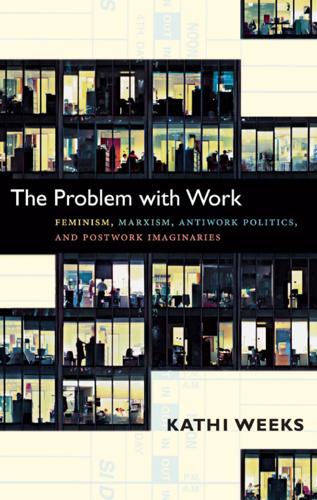
The Problem With Work: Feminism, Marxism, Antiwork Politics, and Postwork Imaginaries
by
Kathi Weeks
Published 8 Sep 2011
The workers described in both Freeman’s and Ross’s accounts used clothes and style as a way to distinguish their employment sector from others (as pink-collar rather than blue-collar, or as no-collar in contrast to white-collar) and, by the same token, to display their status as individuals within that setting rather than merely as members of a “collared” class fraction. But as Hochschild notes in her study of flight attendants, another iconic pink-collar labor force, by defending the intensive managerial control over the workers’ appearance through “continuous reference to the need to be ‘professional,’ ” the standardized results may be imbued with honor and the aura of autonomy, but they nonetheless remain highly regulated.24 According to the industry’s standard of professionalism, “the flight attendant who most nearly meets the appearance code ideal is therefore ‘the most professional.’ ” Consequently, she observes, “for them a ‘professional’ flight attendant is one who has completely accepted the rules of standardization” (1983, 103).
…
As a result of these activities, work plays a significant role in both the production and reproduction of gendered identities and hierarchies: gender is re-created along with value. As in the example of class identities noted earlier, gender identities are coordinated with work identities in ways that can sometimes alienate workers from their job and other times bind them more tightly to it. Whether it is the women informatics workers whose pink-collar status and dress code is, Carla Freeman argues, at once a disciplinary mechanism and a source of individual expression (2000, 2), or the specific model of blue-collar masculinity that made industrial work attractive to the working-class boys of Paul Willis’s famous study (1977, 150), this gendering of labor—doing men’s work or women’s work, doing masculinity or femininity as part of doing the job—can also be a source of pleasure in work and serve to promote workers’ identification with and investments in the job.
…
Besides once again creating more work for women—in the first approach, by adding a second job to women’s lives; in the second, by raising the standards of domestic work—there were additional drawbacks to each of the strategies: whereas the first risked perpetuating the invisibility and devaluation of unwaged domestic work, the second threatened to reinforce the discourse of separate spheres and with it what Charlotte Perkins Gilman decried as “domestic mythology” (2002, 36).18 Second-wave feminists were particularly interested in this second approach, insisting on revaluing feminized forms of not only domestic labor but pink-collar wage labor as well—including, for example, caring work and sex work. The proponents of the classic gynocentric ethic of care claimed that caring labor was real work and should be recognized and valued as such. Though more interested in finding in caring labor another model of ethical work than in imposing the model of waged work on the practices of care, some of these second-wave authors nonetheless echo aspects of the ethical discourse of waged labor in making the case for caring labor’s significance and worth.

A World Without Work: Technology, Automation, and How We Should Respond
by
Daniel Susskind
Published 14 Jan 2020
Paul Beaudry, David Green, and Benjamin Sand, “The Great Reversal in the Demand for Skill and Cognitive Tasks,” Journal of Labor Economics 34:1 (2016): 199–247, quoted in “Special Report on Lifelong Education: Learning and Earning,” Economist, 14 January 2017, p. 2. 20. “Time to End the Academic Arms Race,” Economist, 3 February 2018. 21. Chang May Choon, “Dream Jobs Prove Elusive for South Korea’s College Grads,” Straits Times, 11 March 2016. 22. For “pink-collar” see, for instance, Elise Kalokerinos, Kathleen Kjelsaas, Steven Bennetts, and Courtney von Hippel, “Men in Pink Collars: Stereotype Threat and Disengagement Among Teachers and Child Protection Workers,” European Journal of Social Psychology 47:5 (2017); for the percentages, see the US Bureau of Labor Statistics, “Household Data: Annual Averages” for 2017 at https://www.bls.gov/cps/cpsaat11.pdf (accessed August 2018). 23.
…
For adult men in the United States, a similar story is unfolding, where some workers likewise appear to have left the labor market out of choice rather than by necessity—though for a different reason. Displaced from manufacturing roles by new technologies, they prefer not to work at all rather than take up “pink-collar” work—an unfortunate term intended to capture the fact that many of the roles currently out of reach of machines are disproportionately held by women, like teaching (97.7 percent of preschool and kindergarten teachers are women), nursing (92.2 percent), hairdressing (92.6 percent), housekeeping (88 percent), social work (82.5 percent), and table-waiting (69.9 percent).22 While male-dominated roles in production are on the decline, such female-dominated roles are on the rise and expected to create the most jobs in the coming years, as shown in the projections from the US Bureau of Labor in Figure 6.2.23 Figure 6.2: Most New Jobs, US, 2014–2424 Why are people reluctant to take on available work that they are capable of doing?
…
Displaced from manufacturing roles by new technologies, they prefer not to work at all rather than take up “pink-collar” work—an unfortunate term intended to capture the fact that many of the roles currently out of reach of machines are disproportionately held by women, like teaching (97.7 percent of preschool and kindergarten teachers are women), nursing (92.2 percent), hairdressing (92.6 percent), housekeeping (88 percent), social work (82.5 percent), and table-waiting (69.9 percent).22 While male-dominated roles in production are on the decline, such female-dominated roles are on the rise and expected to create the most jobs in the coming years, as shown in the projections from the US Bureau of Labor in Figure 6.2.23 Figure 6.2: Most New Jobs, US, 2014–2424 Why are people reluctant to take on available work that they are capable of doing? It doesn’t help that the pay for most of these “pink-collar” jobs is significantly below the national average.25 But even more important, it seems, many of the male workers are attached to an identity that is rooted in a particular sort of role—its social status, the nature of the work, the type of people that tend to do it—and are willing to stay unemployed in order to protect that identity.26 THE PLACE MISMATCH The third cause of frictional technological unemployment is that the work that exists may simply be in the wrong geographical area.

Your Computer Is on Fire
by
Thomas S. Mullaney
,
Benjamin Peters
,
Mar Hicks
and
Kavita Philip
Published 9 Mar 2021
Given this, its commitment to hire only management-aspirant young men began to soften, and in the mid-1960s a number of women programmers were able to get jobs in the new, higher-level technical grades of the civil service, as long as they came from the service’s white-collar office worker grades and not from the “pink collar” machine grades. But this brief wave of more egalitarian, meritocratic hiring, in terms of gender if not class or race, did not last long. By mid-1967, the labor crisis had abated just enough to allow a return to previous gendered hiring practices, and the government simultaneously decided to embark on an alternate plan for fixing its computing problems.
…
A lower adoption rate for some “small technologies” may have been due to the region’s smaller middle class, with less disposable income23 than in the United States. But in the case of the typewriter, Kupferschmidt suggests that lower literacy rates, the privileging of male scribal jobs, and the lag to a “pink collar” female stenographical job force, as well as the minimal private or leisure market, all negatively contributed to typewriter sales.24 Historical data regarding Middle East literacy rates is limited, but rates in the 1950s were significantly lower than those in Western Europe and North America. But small technological inventions can have significant consequences.
…
Those who did were usually employed at the lower rungs of the information economy.20 They found service-sector jobs at the ticketing counter of the Delhi metro, at lower-end call centers, at customer service positions in malls, as entry-level data operators for government programs like the unique identification number (UID) project, and at airline and tourism counters. Graduates who were employed at the metro ticketing counters and call centers visited the center to talk to the students about the pleasures of working in a clean, air-conditioned environment and wearing stylish clothes such as well-fitted shirts or short kurtas. Such clothing for pink-collar work was, however, both a site of hidden labor and pleasure.21 The Seelampur women’s insistence on the endurance of dirt and filth during play in their neighborhoods spoke to the limitations of their ICT lessons and work including experiences of stress, abuse, and soul-draining work. They faced harassment by male customers, short-term contract work without breaks, and sudden termination of contracts as part of their positions.

The Technology Trap: Capital, Labor, and Power in the Age of Automation
by
Carl Benedikt Frey
Published 17 Jun 2019
Large numbers of women were employed in offices as a direct result of the introduction of the typewriter.42 But as we shall see in chapter 8, most of the growth of the clerical workforce happened after 1900, when the proliferation of office machines, the mechanization of in-home production, and the desire to boost family income allowed women to make a great leap forward. In the period 1950–70 in particular, about 11.4 million women newly took up clerical occupations, while only 1.5 million men did so. The term “pink collar,” which became increasingly common in the 1970s, referred to the growth in the female, machine-tending clerical workforce.43 Much of the rise in labor force participation over the twentieth century, in other words, was due to mechanization, not just despite it. The Ride to Modernity As essential a part of this story as the transformation of the home and the factory was the revolution in the movement of goods and people.
…
David Card and Orley Ashenfelter, 4:1043–171 (Amsterdam: Elsevier). 1992–2017: author’s analysis using data from S. Ruggles et al., 2018, IPUMS USA, version 8.0 (dataset), https://usa.ipums.org/usa/. However, the experience of women has been rather different. As is well known, the great leap forward of the “pink-collar” workforce came to an end in the 2000s, when computers began to take over more clerical work (figure 13). Just a few decades ago, people who called Amtrak to make a train reservation would have heard a woman answering the phone on the other end. Today, they hear a recorded voice saying, “Hi, I’m Julie, Amtrak’s automated agent.”
…
Knowledge and Household Behavior, 1870–1945,” Journal of Economic History 60 (1): 1–41. 39. Nye, 1990, Electrifying America, 18. 40. Gordon, 2016, The Rise and Fall of American Growth, 227. 41. Greenwood, Seshadri, and Yorukoglu, 2005, “Engines of Liberation.” 42. V. E. Giuliano, 1982, “The Mechanization of Office Work,” Scientific American 247 (3): 148–65. 43. On the term “pink collar,” see A. J. Cherlin, 2013, Labor’s Love Lost: The Rise and Fall of the Working-Class Family in America (New York: Russell Sage Foundation), 119. 44. A. J. Field, 2007, “The Origins of US Total Factor Productivity Growth in the Golden Age,” Cliometrica 1 (1): 89. See also A. J. Field, 2011, A Great Leap Forward: 1930s Depression and U.S.

A People’s History of Computing in the United States
by
Joy Lisi Rankin
In fact, the fields of computation, mathematics, and information processing had long employed women, from the women who worked as computers at the Harvard College Observatory and the women who worked as telegraphers during the nineteenth century to the women who computed the Math Tables Project during the Great Depression, programmed the ENIAC during World War II, and calculated the astronauts’ trajectories for the moon missions. Historians have also emphasized that women were often paid less for performing the same work as men, and that their jobs w ere categorized as lower status, less important pink-collar jobs only because they were performed by w omen. In American computing during the 1960s and 1970s, w omen were gradually pushed out as the field professionalized, a process intertwined with the creation of a particularly masculine computing identity.31 Teletype usage at Dartmouth during the 1960s offers a microcosm of the ongoing erasure of women’s work in the history of information processing.
…
The teletype had been introduced on the telegraph system around 1910 as a way to input messages via typewriter rather than Morse code. In fact, Western Union—t he telegraphy g iant—opened schools across the United States to train women on how to use the teletypes.32 Teletypewriter work quickly became a pink-collar field—low-status clerical work performed by w omen. Despite the fact that the teletype was firmly fixed in the realm of w omen’s work by 1965, it shed t hose gendered connotations at Dartmouth. The Dartmouth men embraced the teletypes and time-sharing as their own, focusing instead on the diffi- Making a Macho Computing Culture 51 culty of pressing the keys, the noise of multiple teletypes in simultaneous use, and the modern architecture of the new computing center.33 Indeed, the use of teletypes with the time-sharing system at Dartmouth (and the subsequent use of teletypes with minicomputers and personal computers during the 1960s through the 1980s) seems to have rendered invisible that earlier—and women-focused—history.
…
He contrasted that frivolous image with the serious “customer who [had] printed out at his terminal news items on topics of part icular interest to him.”103 The female user of the home terminal was the h ousew ife, shopping for shoes, while the male user was the customer, the domestic resident in charge of purchasing, spending, and saving, and he sought news, not shoes.104 When Kemeny tackled how computing would change commuting, he commented, “Another reason why a man goes to his office is because that is where his secretary is. But . . . before very long dictated letters w ill be automatically transcribed by computer.” During the 1960s, secretarial work was pink-collar; most secretaries w ere women, and their labor was lower paid and viewed as lower status than male-dominated blue-collar or white-collar work. With his remarks, Kemeny may again have been playing to the audience’s implicit understanding that a man went to work to see his secretary because she was young, attractive, and at his beck and call.

New Laws of Robotics: Defending Human Expertise in the Age of AI
by
Frank Pasquale
Published 14 May 2020
But too many economists remain conflicted, anxious about maintaining some arbitrary caps on spending in certain sectors while oblivious to unnecessary cost growth in others.49 There is nothing intrinsically more rewarding about working an assembly line than providing, say, physical therapy or companionship to the injured, disabled, and elderly. Political theorist Alyssa Battistoni has argued that there is also an ecological case for shifting purchasing power away from manufacturing and toward services: pink collar jobs are green, in the sense that they use less carbon and other resources than physical objects.50 A common rejoinder is that to be internationally competitive, economies must focus productive capacity on exportable goods and services.51 But countries that excel in education attract millions of students from abroad, and medical tourism is also a growing field.
…
See also COVID-19 Papert, Seymour, 78 “paradox of thrift,” 189 Parkinson’s disease, 98, 133 Paro (Japense robotic stuffed animal), 51–52, 55, 79 pattern recognition, 36 Pavlov, Ivan, 67 Pax Christi, 156 Pearson, 71–72 Pentagon, 164 pharmaceuticals. See drugs Philippon, Thomas, 183 Pichai, Sundar, 111 Piketty, Thomas, 222 pill-cams, 42 pink collar jobs, 190 Pokémon, 79 policing, 122, 143, 200; and military technologies, 10, 167, 168; perils of robotics in, 26, 30, 122–131, 146; and self-driving cars, 21, 22; usefulness of big data to, 165; and violence against minorities, 122. See also law enforcement; predictive policing political economy, 31, 170–198 Pong, 145 Poo, Ai-Jen, 53 pornography, 103, 105, 107 Pound, Ezra, 220 Powers, Richard, 209 Powles, Julia, 106 Prasad, Vinayak, 58 predictive analytics, 2, 18, 20, 39, 48–49, 83, 129, 131–132, 150 predictive policing, 18, 30, 129, 139 presidential election of 2016.
…
See also drones; landmines; lethal autonomous weapons systems; nuclear weapons Weizenbaum, Joseph, 28, 46–47 Westworld, 7 WhatsApp, 100 whistle blowers, 131 Widerquist, Karl, 183 Wikipedia, 87 Wilensky, Harold, 188 Williams, Jody, 156 Winner, Langdon, 202 Wittgenstein, Ludwig, 211, 304n44 Woebot, 47–48 Wojcicki, Susan, 108 workers, 188, 201, 219; and democratization in the workplace, 176–177, 198; educating and training of, 173, 175–179; empowerment of, 4, 199; as human capital, 199; rights and perogatives of, protected by state, 172; unionized, 5, 177. See also blue collar jobs; pink collar jobs Works Progress Administration, 186 World Economic Forum, 25 World War I, 156 Wyman, Jemima, im here to learn so :))))), 219 Xi Jinping, 161, 291n74 Xinjiang Anti-terrorism Technical Equipment Fair, 166–167 Xue Yujie, 60, 61 Yemen, 149, 153 YouTube, 64, 72, 91, 96–98, 108–109, 112, 164 Zappos, 227 Zeroth Law of Robotics, 233n4 Zimbabwe, 166 Zuckerberg, Mark, 95, 100, 103, 272n92

Odd Girl Out: An Autistic Woman in a Neurotypical World
by
Laura James
Published 5 Apr 2017
I always draw a picture of Geoffrey on Fridays when it is drawing time. I am bad at drawing, so I do not have a nice picture of Geoffrey. This makes me feel sad too. When I grow up I am going to have a sausage dog and I am going to call him Claire and give him a pink collar. Mrs Hadar told me you can’t call a boy dog Claire, but I think maybe you can, if you’re a grown-up and you give him a pink collar. I like things to be pink. At Mrs Hadar’s I was allowed to wear pink ballet shoes. Only they weren’t called ballet shoes, they were called slippers. I think this is because you can’t wear them when you go outside. At school you have indoor shoes and outdoor shoes.
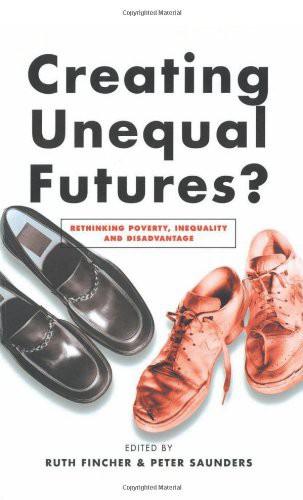
Creating Unequal Futures?: Rethinking Poverty, Inequality and Disadvantage
by
Ruth Fincher
and
Peter Saunders
Published 1 Jul 2001
We know from the way the labour market is developing that blue-collar occupations—particularly at the less-skilled end— are likely to come under increased pressure as the economy restructures in ways unfavourable to manufacturing (O’Loughlin and Watson 1997; DEETYA 1997). Downward pressures on wages, particularly in the award-only sector, will also be unfavourable to these occupations. This will be offset to some extent by growth in ‘pink-collar’ service sector jobs (such as waiters and cashiers), but these are low-paying jobs whose future growth will not lead to higher wages. Consequently, the blue-collar reference person with a pink-collar spouse may find little improvement in their household’s earning situation. Blue-collar/blue-collar households face bleak earnings prospects, unless both end up working much longer hours, as has happened in the United States.
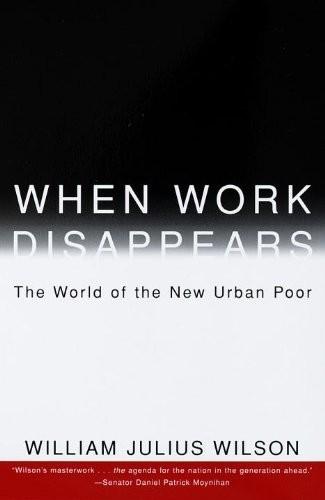
When Work Disappears: The World of the New Urban Poor
by
William Julius Wilson
Published 1 Jan 1996
In another study the social scientists Robert Lerman and Martin Rein revealed that from 1989 to 1993, the period covering the economic downturn, social service industries (health, education, and welfare) added almost 3 million jobs, while 1.4 million jobs were lost in all other industries. The expanding job market in social services offset the recession-linked job loss in other industries. The movement of lower-educated men into the growth sectors of the economy has been slow. For example, “the fraction of men who have moved into so-called pink-collar jobs like practical nursing or clerical work remains negligible.” The large concentration of women in the expanding social service sector partly accounts for the striking gender differences in job growth. Unlike lower-educated men, lower-educated women are working more, not less, than in previous years.
…
Also see Rifkin (1995). 12 Today, most of the new jobs for workers with limited education: Nasar (1994), Freeman (1994), and Holzer (1995). 13 One study found that the U.S. created: McKinsey & Co. (1994). 14 Robert Lerman and Martin Rein revealed that: Lerman and Rein (forthcoming). 15 The expanding job market in social services: Social services increased from 17 percent of total employment in 1979 to 21 percent in 1993. Lerman and Rein (forthcoming). 16 For example, “the fraction of men who have moved into so-called pink-collar jobs”: Nasar (1994). 17 The large concentration of women in the expanding social service sector: Lerman and Rein (forthcoming). 18 Between 1989 and 1993, jobs held by women: Lerman and Rein (forthcoming). 19 Although the wages of low-skilled women … rose slightly: Blank (1994). 20 The wage gap between low-skilled men and women shrank: Blank (1994). 21 The unemployment rates among both low-skilled men and women: Blank (1994). 22 quotation from Freeman and Katz: Freeman and Katz (1994), p. 46. 23 quotation from Rebecca Blank: Blank (1994), p. 17. 24 The workplace has been revolutionized by technological changes: Marshall (1994). 25 Unlike men with lower education, college-educated men are working more, not less: In the decade of the 1980s, 79 percent worked at least eight out of ten months, up from 77 percent during the 1970s.

Wrap It In A Bit Of Cheese Like You're Tricking The Dog: The fifth collection of essays and emails by New York Times Best Selling author David Thorne
by
David Thorne
Published 3 Dec 2016
Good to have police. When no police, then you worry. Your hotel though, very safe, very nice. Here it is now.” He indicated and slowed the van, turning up a path flanked by white painted concrete and hibiscus in full bloom. Pulling up at a pink and white reception building, a smiling man in white pants and pink collared shirt opened the door for us. “Hola, welcome to Las Brisas.” “Well this is alright,” said Holly, throwing back the last of her complimentary cocktail. We’d been driven to our private guest villas in the back of a pink jeep named Kevin Costner.All of the jeeps were named for celebrities who had stayed at the resort and we’d passed Barbara Streisand and Humberto Zurita on the way.
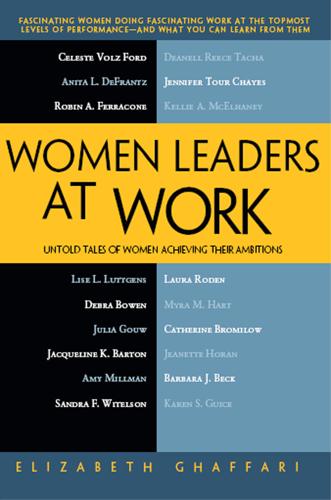
Women Leaders at Work: Untold Tales of Women Achieving Their Ambitions
by
Elizabeth Ghaffari
Published 5 Dec 2011
That’s our target demographic—women in their thirties to fifties who have been in the corporate world, have run departments, or have expertise in a given area. There are a lot of women out there with the ability and interest to run billion-dollar companies. Ghaffari: Do you see, among your clientele, that women follow the pink-collar kind of work, staying within the same businesses that women have been in for centuries? Or do you see them branching out of that? Millman: I don’t see those stereotypes these days, but I’m sure there are many women who pursue those careers. I see the engineers, the scientists, the medical doctors, the finance and marketing gurus.
…
books, 254 business degree at school, 241–242 challenges, 259–261 contribution at Harvard, 247–248 Diana Project, 252–253, 255 entrepreneurship program, 246 executive education courses, 250–251 faculty at Harvard Business School, 245 family and background, 240–241 interviews with alumnae, 249–250 issue change in different places, 255–256 Jewel Company job after MBA, 242 moving to Chicago, 242–244 job, 241 after MBA, 242 Kraft Foods board, 258–259 Magnus Erikson, 253–254 Marjorie Alfus involvement, 251–252 mentors, 244–245 original course developed with Professor Lynda, 250 Springboard Enterprises Diana research group, 257 involvement, 256–257 Staples and Office Depot, 257–258 Starting New Ventures, 246–247 support from Harvard, 245 survey of graduates, 248–249 Women Building Business, 250 Horan, Jeanette advice to men, 312 bachelor's of mathematics, 300 The Boston Club, 310 business CIO role, 306–307 Digital, 303 enterprise business transformation, 306 future aspects, 310–311 IBM, 304–5, 309 MBA at Boston University, 303 nonprofit in Connecticut, 311 OSF, 303 president/chairman role of corporation, 313 product development roles, 302–303 staff, 303 strategic software development, 305 challenges, 308–309 decision-making style, 310 director at MicroVision, 309–310 family, 300–302, 311 good management material, 301 job, 300–301 leader, 313 mentor, 307 Roger Gourd, 302 people management responsibilities, 305 surprises/mistakes, 310 traveling, 308 turning points in career, 308 University of London, 300 women in career path, 304 women opportunity for careers, 312 young women advice to, 311 speaking events, 312 L LA84 Foundation, 19, 25–26, 28 Law's Environment, 176 Lawyer patriots, 175 Leaky pipeline, 12 Luttgens & Associates, 71 Luttgens, Lise, 57 advice to men, 82 advice to young women, 81–82 best and worst responses, 81 business administration executive education program, 66–67 Business Smarts and STEM, 79 in business world, 69 career surprises, 77 CEO, 68–69 challenges, 65 at Children's Hospital, 68 competition, 75–76 decision-making style, 79 education, 58–59 family, 59–60, 64–65 importance, 71 fellowship at Michigan., 63–64 Gold Award, 80–81 hiring people, 79 inspiration, 59 job, 60 at Doheny, 67–68 leader/leadership definition, 80 leadership aspects, 62–63 Luttgens & Associates, 71 mentors, 78–79 merger and acquisition specialist, 69 merger of six area councils, 72 merger of sixe area councils, 73–74 new Girl Scouts, 76–77 Noce, Bill CHLA, 70 influence, 70 moment of truth, 70 succession planning, 70 organization's long-term strategy, 79 planning, 74–75 professional services departments, 65–66 responsible and accountable manner, 64 Ronald McDonald job, 72 thesis, 61–62 transition plan, 71 turning points, 66 UCLA in Southern California, 64 Yale experience, 61 M McElhaney, Kellie advice to women, 220–221 AmeriCorps program, 205 in banking, 203 Calvert, 213–214 co-faculty director, 215 corporate environment, 216 decision-making style, 218 early childhood and family influences, 200 executive education, 215 experience, 204–205 faculty and corporate games, 211 family support, 209, 220 fellowships, 210 first job, 202 founder of Center for Responsible Business at University of California, 199 honors, 200 ING, 216 as leader, 219 master's degree, 202 at Michigan, 206–208 Mike, 210 negative things, dealing, 220 Net Impact, 207 non-tenure teacher, 215 North Carolina University, 201 McElhaney, Kellie (continued) organizational behavior and communication, 202 performance, 213 Sandra Lober's advice, 203 social media, 217 social responsibility committees, 220 Socially Responsible Investment Fund, 212–213 success, 219 supporters, 211 Sustainable Products and Solutions Program, 214 faculty response, 214 traditional media usage, 217 West Coast, 208 Mercer, 43–44 Millman, Amy accomplishments, 129 achievements, 133 brain trust, 133 Carnegie Mellon University, 126–127 Congressional Quarterly, 128 decision-making style, 137, 138 family, 138 entrepreneurs, 126 Global Entrepreneurship Monitor, 135 graduation, 126 learnt from experience, 127, 130 legislative analyst, OSHA, 126 memorable experience, at Trucking Association, 131 mentors, 130 National Women's Business Council, 131–132 Philip Morris anti-smoking movement, 130 contributions to women organizations, 129–130 lobbyist job, 129 Springboard Enterprises, 134 growth, 135–136 international market, 136 Kauffma Foundation, 135 Oracle Conference Center, 134 president of, 125 Washington, DC, 127 business in, 128 women advice for, 138–139 entrepreneurs, 140 pink-collar kind of work, 140 source of venture capital, 141 Monster Meetings, 23 N, O, P Nelson, Georgia, 56 Net Impact, 207 Q QuakeFinder, 8 R Returns on investment (ROI), 206 and metric concept, 213 Roden, Laura advise to women, 237 advisory board, 231–232 boutique investment bank, 232 competitive challenges, 234 decision-making style, 236 education, 224 enhancing deals and membership, 229–230 family, 232–233 future aspects, 234 Harvard Business School, 225 investment, 231 involvement in 100 Women in Hedge Funds, 236 job, 224–25 Chronicle Publishing, 225 food companies/industry, 225 leader, definition, 236 leading-edge kind of person, 226–227 licenses, 232 mentors, 226 motivation, 231 opportunity for young women professionals, 237 positive/negative responses, 233 PowerTV, 227 private investors, 235 relationship with investors/ partners/colleagues, 234 risk taker, 235 San Francisco Jewish Community Federation, 235 strategy decisions, 233 SVASE Angels' Forum, 228–229 combination of venture capitalists, investors, and entrepreneurs, 228 executive director role, 227–228 position, 227 success key factors, 228 US Media Group, 226 VC Privé, 230, 231 S Starting New Ventures, 246–247 Stellar Solutions Aerospace Ltd.

The View From Flyover Country: Dispatches From the Forgotten America
by
Sarah Kendzior
Published 24 Apr 2015
Putting aside that anyone working full-time should be able to survive on their income, and that service workers deserve the same respect as any employee, this argument falls flat because educated professionals whose work offers tremendous benefit to society are also poorly paid. Teaching, nursing, social work, child care, and other “pink collar” professions do not pay poorly because, as Slate’s Hanna Rosin argues, women “flock to less prestigious jobs,” but because jobs are considered less prestigious when they are worked by women. The jobs are not worth less—but the people who work them are supposed to be. Although zero-opportunity employers disproportionately hurt women and minorities, everyone suffers in an economy that does not value workers.

Track Changes
by
Matthew G. Kirschenbaum
Published 1 May 2016
By contrast, the word processor was imagined from the outset as an instrument of what labor and technology historian Juliet Webster has termed “women’s work.”7 Of course, the typewriter too had been feminized upon its inception by Christopher Latham Sholes with his stated belief that he had done something “important” for women heretofore condemned to menial, domestic labor.8 Numerous critics have documented the typewriter’s prismatic refraction of female identity and imagery ever since, including the popular vogue for novels featuring the eponymous “typewriter girl” as archetype.9 But the stock of cultural imagery around the typewriter has since diverged: on the one hand the hardboiled noir writer, inevitably and inveterately male, the typewriter an extension of his intellectual firmament / fermented intellect as the words get punched out of his fingertips in an urgent rhythm; on the other hand, the secretary, a product of pink-collar office culture, the silent and passive conduit for the words of others. She listens but does not speak, she transcribes but does not compose, and she types but never reads. Or at least she’s not supposed to. Unlike the typewriter, then—which at least had its alternative reservoir of masculine imagery to draw upon—when writers began buying word processors, they were buying a product originally designed for a very specific usage and environment.
…
As late as 1990, an independent vendor produced a menu-based interface called (what else) Perfectly Simple that could be installed as an add-on to WordPerfect. For some literary authors, the allure of a personal computer with all its teeming intricacies may have been enough to offset word processing’s pink-collar associations. Mastering a “microcomputer” was a proposition very different from operating a piece of office equipment by rote instruction. Thus the predilection for tinkering shared by Pournelle, Brodkey, Fallows, Tan, Straub, Clarke (but not Asimov), and many others. Can we recast some of the apprehensions and anxieties about word processing from male and female authors alike as a resistance to being superimposed onto the figure of that Royal typewriter lady?

Coders: The Making of a New Tribe and the Remaking of the World
by
Clive Thompson
Published 26 Mar 2019
The men leave that area, looking for new cutting-edge areas where they can reestablish artificial scarcity and a tacit no-girls-allowed culture, or at least one where girls are regarded as foreign interlopers. These days, that appears to be Bitcoin—or blockchain tech in general—and AI, where, whenever I go to events, it’s a sea of men, far more than most other fields of coding. What is actually going on, Posner argues, is the creation of a “pink-collar ghetto” in coding. The world of programmers is willing to admit that, sure, women and minorities may be expert at JavaScript and all the things that go into making a website or mobile app highly functional, and to respond precisely the way a user wants. But that gets denigrated as aesthetic, fuzzy stuff.
…
For him, a central glory of coding seemed to lie precisely in its difficulty, that it chased people away, leaving only the monk-like devotees behind, to ponder their ASCII printouts in blissful silence. COBOL and BASIC were the targets back then—but today, that snobbishness is leveled at the web languages so many newbies and underrepresented coders use as their on-ramp: JavaScript, HTML, CSS. As the pink-collar ghetto emerges in the front end, the self-appointed alpha nerds flee it. These days, they’re less and less interested in web or app development and are moving into emerging areas like blockchain—Bitcoin and other cryptocurrencies—or machine learning. They’re fields that are newly technically challenging; serious machine-learning work requires some genuinely mathematical thinking (and, if you practice it at a high level, formal computer science education).

The Quiet Coup: Neoliberalism and the Looting of America
by
Mehrsa Baradaran
Published 7 May 2024
Neoliberalism is an economic ideology that champions free markets as the sole guarantor of freedom and catalyst for prosperity while denouncing taxation and regulation as a threat to liberty. You may believe you’ve heard this story before. There have indeed been many brilliant books in recent years about the epochal changes to America’s (and indeed the world’s) political economy since the 1970s, covering everything from deindustrialization and financialization to the rise of “pink-collar” work and skyrocketing inequality, and more—and sometimes all at once. This book tells a revisionist story of neoliberalism that takes the conversation away from the realm of economics and focuses instead on the law. We’ve missed the root causes, the primary actors, and much of the (ongoing) harms of neoliberalism because we haven’t looked closely at the role of law in shaping our society.
…
Olin Foundation Olson, Theodore, 137, 149 “one man, one vote,” xxiv, 54, 341 Onion, The, xxvi Opendoor, 326 opiate pandemic, xx opportunity, 365 Orange County, Calif., 19 Oregon, 214 Organization of the Petroleum Exporting Countries (OPEC), 47–48, 50, 60, 61, 70 original intent, 145, 157 originalism, 130, 134–36, 138, 139, 141–52, 154–57, 163, 174, 175, 179 Origins of Totalitarianism, The (Arendt), 35 Orwell, George, xxxiii Ostrom, Elinor, 172 Other People’s Money and How the Bankers Use It (Brandeis), 254–55 Oxford University, 344 OxyContin, 108 Pacific Gas and Electric Company (PG&E), xiii–xiv, xviii–xxii, xxxiv Pacific Research Institute, 92 Paine, Thomas, 364 Common Sense, 40 Pakistan, 39 Palestine Liberation Organization (PLO), 41 Pan-Africanism, 43 Pandit, Vikram, 261, 290 Papademos, Lucas, 64 paperwork reduction, 236 Paperwork Reduction Act (1980), 237 Paradise, Calif., xiii Paraguay, 165–66 Pareto, Vilfredo, 169–70, 266 Pareto efficiency, 170 Pareto’s theorem, 224 Paris, France, 42, 43 Parks, Rosa, xxxii patents, 205, 274 Patman, Wright, 199 patriarchy, xxix, 177 Paulson, Henry, 289, 291–93, 295, 301, 307, 309, 317 pawn shops, 213 payday lending, 92, 179–80, 208, 212–15 PAYGO spending limits, 238 PayPal, 326 PBS, 94 pedophile rings, xxiv pensions, 216, 271, 288 Pentagon Papers, 62 personal responsibility, 176, 217 Personal Responsibility and Work Opportunity Act (1996), 231 Peru, 55 Pew Research Center, 213 pharmaceutical companies, xix, xx, xxiii, 108 Philadelphia Plan, 73–74 Philipson, Tomas Private Choices and Public Health: The AIDS Epidemic in an Economic Perspective, 176–78 Phillip Morris, 86, 88, 92, 105 Phillips, Channing, 78 Phillips, William, 64 Phillips curve, 64 Phillips-Fein, Kim, 88 Piereson, James, 156–57 Pierson, Paul, 215 Pill, the, 38, 138, 140 “pink-collar” work, xvii Pinochet, Augusto, 54, 55, 227 Pistor, Katarina, 274 Planck, Max, 23 “plandemic,” xxiii Planned Parenthood v. Casey, 154–55 Plessy v. Ferguson, 101, 126, 143, 144, 155 Polanyi, Karl The Great Transformation, 240–41 Polanyi, Michael, 240 police and police departments, 5–6, 117–18 political action committees (PACs), xxiii–xxiv, 91 political corruption.

Geek Sublime: The Beauty of Code, the Code of Beauty
by
Vikram Chandra
Published 7 Nov 2013
Manifest destiny—with its cast of robber barons, tragically doomed natives, laboring Asians and African Americans, grizzled soldiers, and Lone Rangers—still casts its spell over the boardrooms and universities of America, and so the practitioners of some of the most nerdy professions in history (media-making; software-making; lending and borrowing money) develop codes of masculinity that allow them to “walk smart.” In September 2011, the programmer Rob Spectre gave a presentation at a conference entirely in character as Chad the Brogrammer, wearing the standard fraternity-bro uniform of popped pink collar and dark glasses. A video of the presentation quickly went viral, and Spectre’s lines were suddenly all over the blogosphere: “In the immortal words of Brosef Stalin, ‘Dude, I’m way too faded to build this [difficult low-level] shiz. Imma have some other broheims do the grunge work. Totes magotes.’”62 Spectre was joking, but he had touched on a trend that many had noticed: “Tech’s latest boom,” Businessweek observed in 2012, “has generated a new, more testosterone-fueled breed of coder,” such as Danilo Stern-Sapad, a twenty-five-year-old who doesn’t like being called a geek, who “wears sunglasses and blasts 2Pac while programming,” who proudly reports that “we got invited to a party in Malibu where there were naked women in the hot tub.

Wordslut: A Feminist Guide to Taking Back the English Language
by
Amanda Montell
Published 27 May 2019
“Historically, in coal-mining areas, a miner would make more money in a week than his waitress girlfriend would make in a month,” Vasvári explains. A woman could theoretically get a coal mining job, and many have, but the work is brutal and the social environment unwelcoming. So, for a woman to earn more dough in a culturally acceptable manner, she would have to get what is called a “pink-collar” job, like a receptionist or bank teller. And these sorts of jobs require new language skills, whether that means learning a more “prestigious” dialect or an entirely new language. As Vasvári recalls, “There was a study in Spain where women were learning Catalan because they wanted to be able to go out and get a secretary job, and the men would actually make fun of them for becoming bilingual.”

The City: A Global History
by
Joel Kotkin
Published 1 Jan 2005
The tight boundaries of the island had placed a premium on the use of space.44 Rising demands for space by the diverse sectors of the city’s economy—light manufacturing, trade, finance, and other services—fostered irrepressible pressure for concentration. Manufacturing still employed many New Yorkers, but the most dramatic increases in the workforce now took place among white-collar employees as well as a swelling army of “pink collar” female clericals. The opening in 1904 of the subway system allowed increasingly large numbers to be shuttled between residential neighborhoods elsewhere on the island and the downtown and midtown office districts. New York’s annexation of Brooklyn and other adjacent areas in 1898 provided Manhattan with a sprawling hinterland from which to draw even more workers to its congested streets.

Plenitude: The New Economics of True Wealth
by
Juliet B. Schor
Published 12 May 2010
It incorporates desirable consumer features such as the ability to customize. Small-scale and sufficiency production also match the emergent skill set of the population. In the old mass production system, advanced numeracy and literacy were concentrated in managers and designers, and blue- and pink-collar work was deskilled. By contrast, high levels of numeracy and literacy are required more broadly in a technologically advanced economy, and equally so for the high-productivity, low-impact systems of agriculture and manufacture I have been discussing. As these skills are diffused through the population, the efficient scale of production falls.
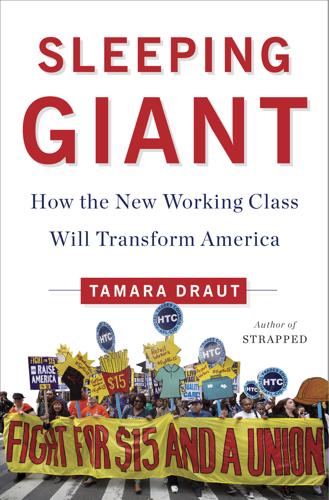
Sleeping Giant: How the New Working Class Will Transform America
by
Tamara Draut
Published 4 Apr 2016
And their marginalized status in our society carried over into the working class, making it easier to overlook and devalue their work. When working-class women punched the clock in ever greater numbers in the 1980s and 1990s, it was nearly entirely in the absence of a union. Unlike the hard-hat guys, America’s mushrooming “pink collar” workforce lacked the social solidarity that unions had provided for generations of blue-collar workers. And so working-class women toiled on the margins of political and social awareness while preserving their families’ dignity by bringing home a paycheck. That’s now changing, as women are at the forefront of the new movement for better wages and working conditions and are now almost as likely as men to belong to unions, closing the long-standing gap in unionization.

12 Bytes: How We Got Here. Where We Might Go Next
by
Jeanette Winterson
Published 15 Mar 2021
Here’s a photograph of Ann Moffatt doing just that in 1968. Ann led the Concorde project, and later became Technical Director of Stephanie’s company, Freelance Programmers. * * * Freelance Programmers, though, couldn’t employ all of the women being pushed out of the UK computing industry. Because the work was thought of as ‘pink collar’, men didn’t want to try it, and women were considered unsuitable to manage men, hence no promotions. The UK government then did something extraordinary. Actually insane. Rather than accept that it needed its skilled workforce of computer-literate women, it decided to merge Britain’s existing computer companies into one giant company, International Computers Ltd, to provide massive mainframe computers that just a few highly trained men could operate.

So Close to Being the Sh*t, Y'all Don't Even Know
by
Retta
Published 28 May 2018
My dad got a job in the Revlon warehouse and my mom worked as an insurance adjuster while in school, but with three kids (my younger brothers, George Jr. and Michen, and me) and a revolving group of cousins living with us, we were always broke. My dad was blue-collar before he retired and my mother would be considered pink-collar. We never had money to spare. A phrase I often heard growing up was “money is tight” and another (not so diplomatic) one was “money doesn’t grow on trees.” My father was a diligent “saver” and once he had enough for a down payment he bought us a beat-up house in Cliffwood Beach, a Jersey suburb less than an hour from New York City.

Electric City
by
Thomas Hager
Published 18 May 2021
With Norris, the dam and the town both, under construction, and plans laid and ground being cleared for the next dam, and the next, and the next, the region began coming to life. Only this time it was not just around the Shoals, but all the way up the river to the middle of Tennessee, where the TVA built its headquarters in Knoxville. There were jobs now, thousands of them—blue-collar, white-collar, and pink-collar, for men and women, Black and white. Applicants flocked to Muscle Shoals by train or bus if they could afford it, riding the rails, hitchhiking, or walking if they couldn’t. Many of them were highly educated and trained, and the TVA soon boasted “one of the most over-qualified work forces ever put together,” as historian North Callahan put it.

Hogg
by
Samuel R. Delany
Published 29 May 2011
The wop stepped up, dropped to a squat, and put his other hand on the girl's cheek. He pushed her hair, lighter brown than her mother's, back from her ear, bringing his dirty middle finger down her cheek, under her jaw—she blinked, opened her mouth a little, closed it again, but she must have been scared to turn her head— down her neck, and hooked it in the round, pink collar. He pulled at it, slow, down enough so you could see the top of her bra. She was maybe fourteen; and the bra was just about flat. The woman, half limp in the nigger's grip, was crying now. It wasn't a full sound at all, but a non-stop squeak that went on at the same pitch while she shook her head, with her eyes closed tight.

The Next 100 Years: A Forecast for the 21st Century
by
George Friedman
Published 30 Jul 2008
For them, chaotic patterns of reproduction have always been the norm. However, between the college-educated professional and business classes on the one side and the underclass on the other, there is a large layer of society that has only partially experienced the demographic shifts. Among blue-and pink-collar workers there have been other trends, the most important of which is that they have shorter educations. The result is less of a gap between puberty and reproduction. These groups tend to marry earlier and have children earlier. They are far more dependent on each other economically, and it follows that the financial consequences of divorce can be far more damaging.

The Economics of Belonging: A Radical Plan to Win Back the Left Behind and Achieve Prosperity for All
by
Martin Sandbu
Published 15 Jun 2020
In the United States, for example, one in four new jobs in the next decade is expected to come in health care, social assistance, and education, and we should expect similar developments elsewhere.19 In many places, however, these jobs come with low status and lower pay. This means that to be fully included in the economy of the future, more men, in particular more unskilled men, must be willing not just to take jobs in services but to work in service jobs traditionally occupied by women (sometimes given the slightly sexist label “pink-collar jobs”), and those jobs themselves must offer decent conditions regardless of who works in them. Of course men can do such jobs. But many resist them. If Trump’s “Make America Great Again” means anything, it is a call to bring back the factory- and extraction-based employment of yesteryear and restore the prestige of the male breadwinner to workers who put more stock in a certain idea of manliness than in formal education.

On Writing: A Memoir of the Craft
by
Stephen King
Published 1 Jan 2000
No promises, but … Frank doesn’t need promises; like most beginning writers, all he needs is a little encouragement and an unlimited supply of take-out pizza. He mails the story off with a letter of thanks (and a letter of thanks to the ex-Lodgepine editor, of course). Six months later “Two Kinds of Men” appears in the premiere issue of Jackdaw. The Old Boy Network, which plays as large a part in publishing as it does in many other white-collar/pink-collar businesses, has triumphed again. Frank’s pay for this story is fifteen dollars, ten contributor’s copies, and another all-important credit. In the next year, Frank lands a job teaching high school English. Although he finds it extremely difficult to teach literature and correct student themes in the daytime and then work on his own stuff at night, he continues to do so, writing new short stories and getting them into circulation, collecting rejection slips and occasionally “retiring” stories he’s sent to all the places he can think of.

Duped: Double Lives, False Identities, and the Con Man I Almost Married
by
Abby Ellin
Published 15 Jan 2019
Another study found that men typically stole because they needed money to overcome a problem of their own making, whereas women focused on the needs of their families.32 Kelly Paxton, a certified fraud examiner in Portland, Oregon, believes the reason more women aren’t committing crimes is what’s known as the “pink ghetto.” (The term “pink-collar crime” was coined in the late 1980s by Kathleen Daly, a professor of criminology and criminal justice at Griffith University in Brisbane, Australia.33) It’s not that women are so honest, it’s just that they haven’t been given the same chances to commit fraud as men have. “They’ve always made ends meet either through prostitution or shoplifting,” she said.

Home Sweet Anywhere: How We Sold Our House, Created a New Life, and Saw the World
by
Lynne Martin
Published 14 Apr 2014
All conversations must begin with inquiries about the health of family, and gentlemen still open doors for ladies and rise when one enters the room. It’s all part of the slower pace. We have to relearn that cadence every time we arrive in San Miguel, but we are grateful for it. Tim wheeled into the parking lot, where a large black Labrador with a neon pink collar was deep in the uninterrupted nap he seemed to enjoy every time we came here. An enormous, garish, four-foot glazed pottery chicken sat atop the rudimentary carport. It’s a colorful town. We struck out at a brisk pace, a dangerous thing to do on four-hundred-year-old uneven stone streets with foot-high flagstone curbs that dip and rise without warning.

Hate Inc.: Why Today’s Media Makes Us Despise One Another
by
Matt Taibbi
Published 7 Oct 2019
Working Class” that among other things took Democrats and their proxies in media to task for being clueless when it came to addressing the legitimate concerns of a sector of society that was losing job security and the dignity that came with it. She wrote: For many blue-collar men, all they’re asking for is basic human dignity (male varietal). Trump promises to deliver it. The Democrats’ solution? Last week the New York Times published an article advising men with high-school educations to take pink-collar jobs. Talk about insensitivity. Her article was full of nuanced, uncomfortable observations about why working-class people voted for Trump. It clearly struck a chord, becoming the most-read online piece in the history of the publication, with over 3.7 million readers. She wrote a follow-up book immediately.

The New Jim Crow: Mass Incarceration in the Age of Colorblindness
by
Michelle Alexander
Published 24 Nov 2011
The rate fell to 18 percent for those living in ghetto areas.79 Women fared somewhat better during this period because the social-service sector in urban areas—which employs primarily women—was expanding at the same time manufacturing jobs were evaporating. The fraction of black men who moved into so called pink-collar jobs like nursing or clerical work was negligible.80 The decline in legitimate employment opportunities among inner-city residents increased incentives to sell drugs—most notably crack cocaine. Crack is pharmacologically almost identical to powder cocaine, but it has been converted into a form that can be vaporized and inhaled for a faster, more intense (though shorter) high using less of the drug—making it possible to sell small doses at more affordable prices.
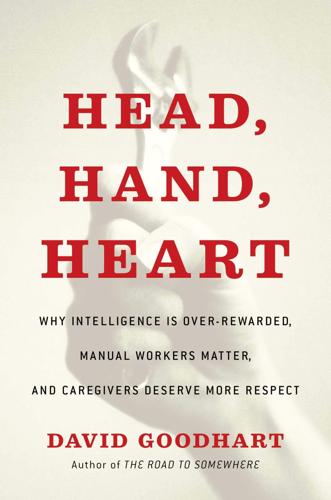
Head, Hand, Heart: Why Intelligence Is Over-Rewarded, Manual Workers Matter, and Caregivers Deserve More Respect
by
David Goodhart
Published 7 Sep 2020
But if the past is a guide to the future, a big move by men into nursing and other traditionally female occupations seems unlikely; one UK survey found that 85 percent of men would not consider a career in social care.52 And Daniel Susskind, in his book A World Without Work, reports that most adult men in the US displaced from manufacturing roles prefer not to work at all than take up “pink collar” work. In recent years the care sector has become more female, not less, as women have moved into medical roles. (A majority of GPs in the UK are now women.) The gender imbalance in adult care is less extreme than in nursing—about 18 percent of staff are men53—and there are some corners of care, such as mental health nurses and paramedics and ambulance staff, that are mainly male.

The Investment Checklist: The Art of In-Depth Research
by
Michael Shearn
Published 8 Nov 2011
As he saw professors and working adult students interact, he sensed how intense the students’ desire was to complete their degrees. He could see that the educational experience was life-changing. Silberman explains, “Take a 35 year old, with only a high-school degree, who has been working either as a pink-collar, blue-collar, or underutilized white-collar [employee] for 15 years. Their earning power and ability to maintain a middle class lifestyle has become more difficult. When they attend college, it is an absolute game changer.” Silberman remembers flying in to Washington, D.C., for a Monday evening class.

The Lie of the Land
by
Amanda Craig
Published 14 Jun 2017
No doubt he had broken their hearts, too, though how can one romantic disappointment measure up to the destruction of a family? All things considered, Lottie would really prefer to see her mother in private, but Marta insists on a brisk constitutional walk across the Heath every morning with her white terrier. ‘Darling!’ she says, bestowing a kiss redolent of Revlon. Her glasses match Heidi’s bright pink collar, and her thick white hair is immaculately styled. ‘Breakfast?’ Lottie shakes her head. Marta orders a double macchiato for herself, a poached egg with toast, and a smoothie. ‘How are you?’ Lottie asks, to forestall further enquiries. ‘I am in mint condition. So, you are upside-downing?’ ‘Downsizing.

The Rise and Fall of American Growth: The U.S. Standard of Living Since the Civil War (The Princeton Economic History of the Western World)
by
Robert J. Gordon
Published 12 Jan 2016
Claudia Goldin, who calls it the “Quiet Revolution,” describes this period after 1970: “With more accurate expectations, they could better prepare by investing in formal education and they could assume positions that involved advancement. That is, they could plan for careers rather than jobs.”18 Women began to become accepted as career-track professionals whose progress went far beyond the traditional pink-collar occupations. In 1960, 94 percent of doctors were white men, as were 96 percent of lawyers and 86 percent of managers. By 2008 these numbers had fallen to 63 percent, 61 percent, and 57 percent respectively.19 The new environment was described in the early 1990s by Shirley Bigley, then a vice president of Citibank: It was right in my vintage when the numbers of women dramatically started to change.
…
In consequence, the residual portion of the gap rose relative to the explained portion.”25 Goldin’s analysis of the residual gap distinguishes two different sources of gender-related wage differences, those between occupations and those within occupations. Despite the increased professionalization of female occupational choices, the occupational composition of women is still quite different than men, particularly when skilled pink-collar occupations are compared with skilled blue-collar occupations. For instance, virtually all midwives are female, and virtually all cement contractors are male. Goldin concludes that these occupational choices explain only about a third of the residual gender wage gap, leaving the remaining two-thirds to be explained within occupations.
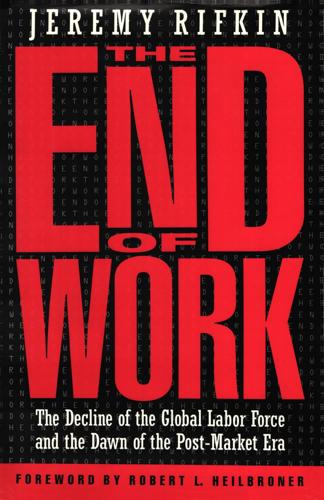
The End of Work
by
Jeremy Rifkin
Published 28 Dec 1994
He earned $13 an hour and enjoyed a generous company benefits package. After being laid off, he was only able to find a job for a small subcontractor at $ 5.00 an hour with no benefits. His new job was making parts for his former employer. 39 Although the public perception of temp workers is still the Kelly girl-part-time receptionists, secretaries, and other pink collar clerical workers-the reality is that temps are being used as a substitute for permanent workers in virtually every industry and sector. In 1993 temporary agencies leased more than 348,000 temporary workers a day to the nation's manufacturing companies, up from 224,000 in 1992 .40 Professional employment is also becoming temporary.
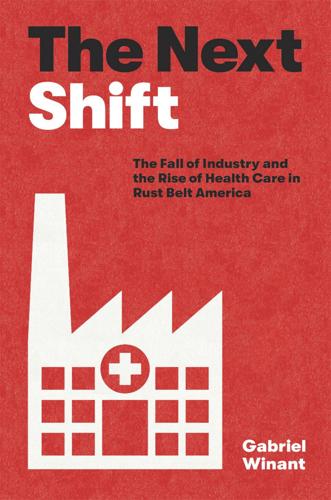
The Next Shift: The Fall of Industry and the Rise of Health Care in Rust Belt America
by
Gabriel Winant
Published 23 Mar 2021
African American men ranked lower in these industries and would find them harder to live off for long—but they depended on blue-collar work for subsistence to the same degree that white male workers did at this moment of industrial high tide. The more distinctive pattern in Black employment, however, occurred for women. African American women found work in hospitals, laundries, and food and drink service, but a pink-collar world of jobs as secretaries, telephone operators, saleswomen, and teachers was largely closed to them. Black women were driven instead into domestic work: 42 percent of employed Black women in 1950 worked as domestics, next to 5 percent of employed white women.18 All these patterns of employment, however, orbited around the predominant place of manufacturing in general and steel in particular.

Class Acts: Service and Inequality in Luxury Hotels
by
Rachel Sherman
Published 18 Dec 2006
Berkeley: University of California Press. Fisher, William P. 1998. “Managing Your Boss.” Lodging Magazine (December): 37. Frank, Robert. 1999. Luxury Fever: Money and Happiness in an Era of Excess. Princeton, NJ: Princeton University Press. Freeman, Carla. 2000. High Tech and High Heels in the Global Economy: Women, Work, and Pink-Collar Identities in the Caribbean. Durham: Duke University Press. Fuller, Linda, and Vicki Smith. 1996. “Consumers’ Reports: Management by Customers in a Changing Economy.” In Working in the Service Society, ed. Cameron Lynne Macdonald and Carmen Sirianni. Philadelphia: Temple University Press. UC_Sherman (O).qxd 10/3/2006 2:01 PM Page 329 References 329 Gilbert, Robert. 2001.

The Cigarette: A Political History
by
Sarah Milov
Published 1 Oct 2019
But Shimp’s vision for representation was rooted in her experience as part of a labor union—at the very heart, in fact, of what Ruth Milkman has described as the “fourth wave” of union organizing in the pink- and white-collar telecommunications, secretarial, and airline sectors.48 “The majority of employees trapped in the ‘ghettoes’ of the workforce (secretarial pools, clerical areas, etc.) are women,” Shimp wrote.49 “Ghetto” was a revealing choice of words. During the 1970s, feminist observers of the American workplace spoke increasingly of the “secretarial ghetto” or the “pink-collar ghetto”—the poorly paid, low-status, dead-end service and clerical jobs that were feminizing the labor force.50 The right to breathe smoke-free air was, for Shimp, a question of workplace rights. And given the rising tide of female office workers—who smoked less relative to their male colleagues—Shimp conceived of women as a laboring group in need of specific protection from ambient tobacco smoke.

The Origins of the Urban Crisis
by
Sugrue, Thomas J.
From 1950 through 1970, black women remained concentrated in operative positions relative to whites; but the 1960s marked a narrowing of the gap between black and white women employed as service workers and laborers. Still, despite gains, black women were two times as likely to be found in service and labor positions than white women. The period from 1940 to 1970 saw some significant advances for black women relative to white women. The representation of black women in white- and pink-collar jobs moved toward convergence with that of whites, especially in the professions, managerial, clerical and crafts. To overemphasize gains, however, would be to misrepresent trends. The index of occupational representation makes clear the enormous chasm which separated the occupational structure of whites and blacks in Detroit, even as late as 1970.

Aerotropolis
by
John D. Kasarda
and
Greg Lindsay
Published 2 Jan 2009
Supposing a 50 percent jump in passengers following its current expansion (a decidedly optimistic assumption), the corresponding 5 percent rise in employment would yield about 185,000 jobs—more than the population of Little Rock or Salt Lake City. Working backward, he estimated that O’Hare creates twenty-two jobs for every thousand passengers it adds, and it doesn’t matter whether they’re going to Toledo or Tokyo. Interestingly, all appear to be the white- or pink-collar kind. They range from CEOs and insurance salesmen to real estate agents and teenagers manning fast-food counters. What sets Las Colinas apart from Chicago and every other city in America is that its boosters won’t settle for anything less than luring a headquarters here. They woo executives at the apex of the org chart, the ones whose time is worth whatever the stock price closes at that day.

Commodore: A Company on the Edge
by
Brian Bagnall
Published 13 Sep 2005
The ad agency was responsible for many high-profile brands including Arm & Hammer baking soda (with the boxes wearing scarves and earmuffs and chatting with each other inside the freezer), Head & Shoulders (the man with two different dandruff shampoos on each side of his head saying, ‘This side tingles’), and Black Flag insecticide. The agency would film the commercials and shoot the photographs in New York. In the early eighties, most computer companies had a spokesman named Bill. Radio Shack had Bill Bixby and later Bill Gates in a stunning pink-collared shirt and white sweater. Texas Instruments had Bill Cosby. Commodore would also have a Bill. The ad agency made an inspired choice for company spokesman. Almost every computer nerd in the 1980s was a Star Trek fanatic. A sure sign of this was the number of early computer games that focused on Star Trek.
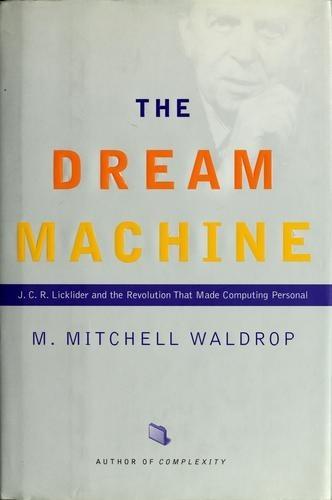
The Dream Machine: J.C.R. Licklider and the Revolution That Made Computing Personal
by
M. Mitchell Waldrop
Published 14 Apr 2001
True, this was a distinctly unmathematician-like interest on Wiener's part: most other members of his tribe were contemptuous of computation, argu- ing that a real mathematician gained insight by abstract reasoning, not by reck- oning. Slide rules were acceptable for scientists and engineers, but brute number crunching was just arithmetic, a task for desktop adding machines-women's work (the word computer was still a job description in the 1920s, carrying much the same pink-collar connotation as typist). The building of computing machinery was, by extension, a job for mere tinkerers. The greatest apparatus man in America: Vannevar Bush contemplates the Differential Analyzer THE LAST TRANSITION 25 Wiener, however, was among the few great mathematicians who had actually worked as computers, and his patriotic stint calculating artillery trajectories dur- ing World War I had taught him all too well that numerical calculation was not just a matter of punching numbers into an adding machine.

Why the West Rules--For Now: The Patterns of History, and What They Reveal About the Future
by
Ian Morris
Published 11 Oct 2010
A woman’s work was still never done, but by 1960 she could jump in the car (almost every American family had one), drive to the supermarket (where two-thirds of the country’s food was sold), store her purchases in the refrigerator (98 percent of houses had them), and put the laundry on before the two or three kids got back from school and settled in front of the TV. The changes freed women for work outside the home in an economy rapidly shifting from manufacturing toward services, shedding blue-collar labor but crying out for pink-collar workers. In the richest countries the proportion of women in paid jobs and higher education rose steadily after 1960, and, like every era before it, this age got the thought it needed. Books such as The Feminine Mystique and Sexual Politics urged middle-class American women to seek fulfillment outside their traditional roles.

Bourgeois Dignity: Why Economics Can't Explain the Modern World
by
Deirdre N. McCloskey
Published 15 Nov 2011
Office work in the age of word processing has moved far from physical typing and filing and copying done by women, not to speak of the earlier transition from Bartleby the Scrivener or Bob Cratchit on a high stool. So, for that matter, have many blue-collar jobs come to involve sweet talk, such as warehousemen persuading each other to handle the cargo just so, as have pink-collar jobs, such as waitresses dealing all day with talking people. Debra Ginsberg in her memoir Waiting: The True Confessions of a Waitress (2000) shows that the first minute of contact with the customers is a little stage show, and determines the tip. It’s not “mere” talk. A good percentage of such talkers are persuaders.

Golden Holocaust: Origins of the Cigarette Catastrophe and the Case for Abolition
by
Robert N. Proctor
Published 28 Feb 2012
Some of course must have made their way into the hands of children, and some of those sold in Britain—emblazoned with John Player Special insignia, for example—came with instructions cautioning that “modeling skills” were helpful “if under 10 years of age.”50 That of course was the whole point: to keep the brand in the public eye. It didn’t really matter what sport was being sponsored, or even whether it really was a sport, so long as cigarettes entered the hearts and hands of the right kinds of people. Which increasingly in the 1970s and 1980s meant the young and your average blue- and pink-collar working stiff. We don’t normally think of auto shows as a sport, for example, but R. J. Reynolds in 1982 started sponsoring Winston Championship Auto Shows, which it took over and renamed from the International Championship Auto Shows. Three million people were expected to attend these two hundred annual events, where 730,000 free packs of cigarettes were to be handed out by “attractive sampling girls.”